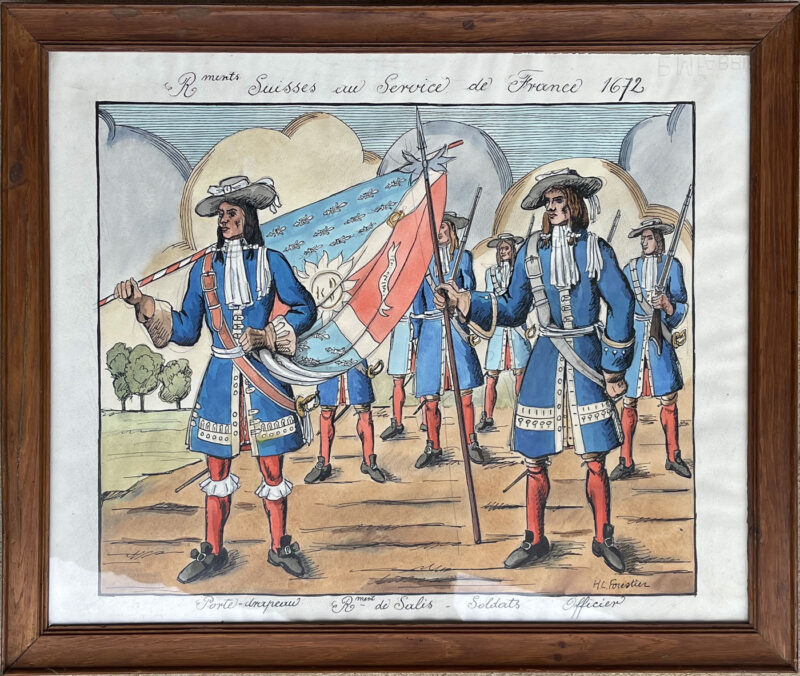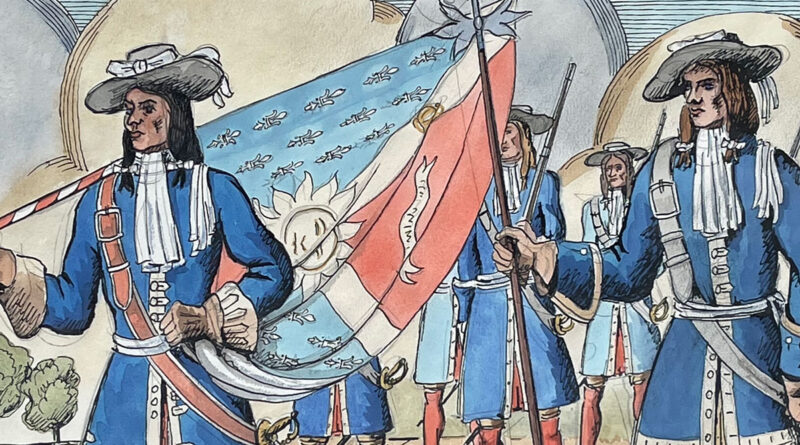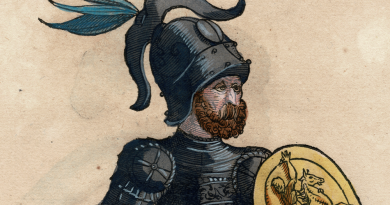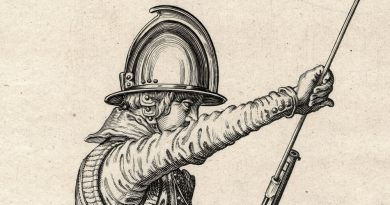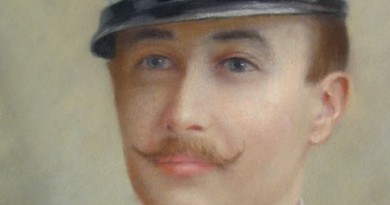Henry-Claudius Forestier – Regiment of Swiss Guards in France
Illustration by Henry-Claudius forestier (Mixed media – watercolor and gouache over pen and pencil) of the famous Swiss guards who protected French royalty. The text on this image reads: “Régiments Suisses au Service de France 1672 – Porte-Drapeau – Régiment de Salis – Soldats – Officier. (Swiss regiments in the service of France 1672 – Regiment of Salis – Soliders / Officers).
The Gardes suisses or Swiss guards also called the régiment des Gardes suisses, was an infantry regiment which serviced the kings of France from 1616 to 1792 and from 1815 t0 1830. The guards were also referred to as the 100 Swiss (100 Suisses). This mixed media skeetch was probably a project for an illustrated book or magazine or for a poster.
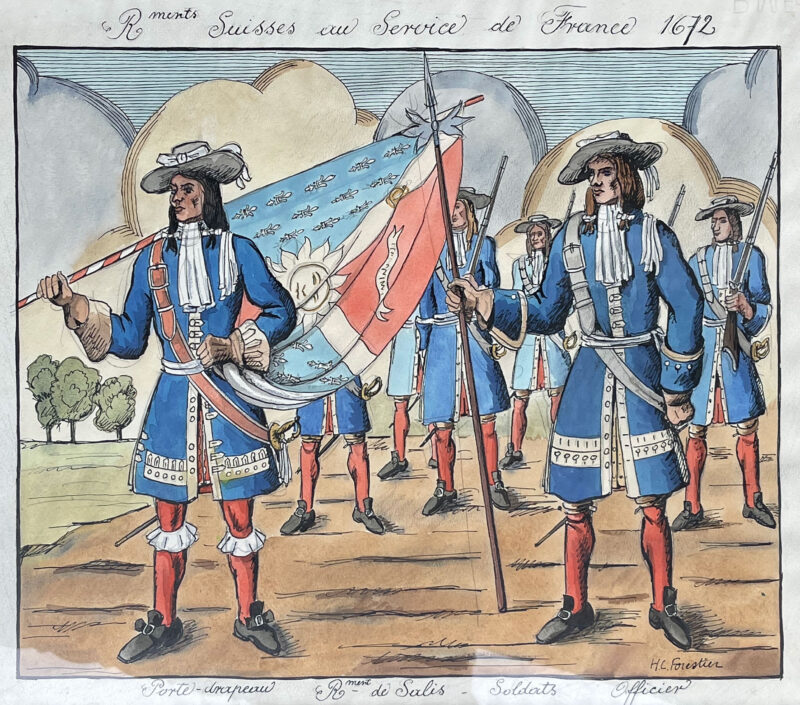
February, 25 1874 in Chêne-Bougeries - May 21, 1922, Meyrin
Also known as: Henri-Claudius Forestier
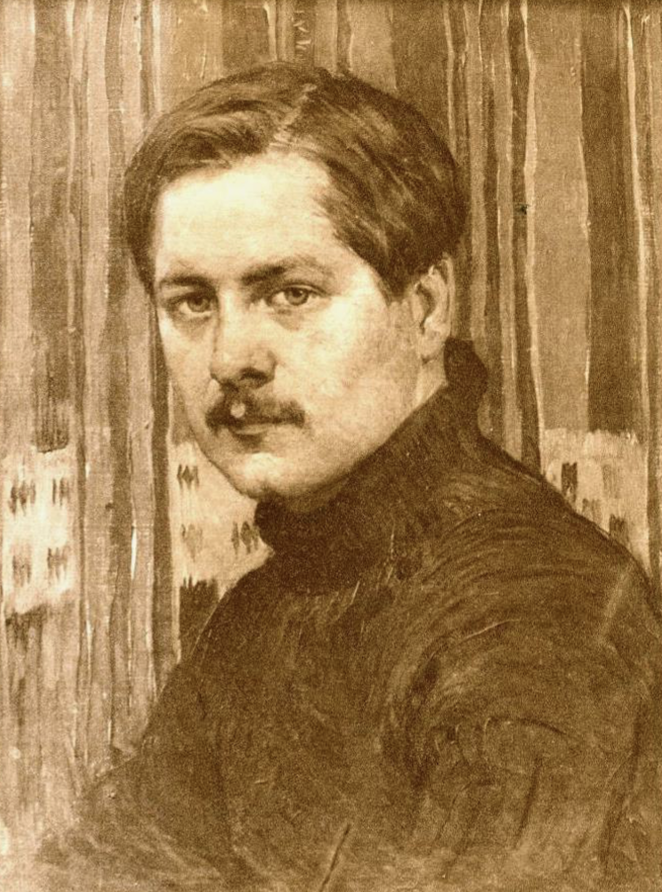
Henry-Claudius Forestier studied at the École des Arts industriels in Geneva, where he took the woodcut class taught by Alfred Martin. His classmates were Jules Fontanez und Édouard Vallet. After a five year stay in Paris, Forestier returned to his home canton of Geneva, where he spent most of the rest of his life.
He contributed widely to illustrated magazines, and satirical reviews and is known for his striking poster designs featuring folk festivals and Swiss traditional costumes. When the Swiss national exhibition took place in Geneva in 1896, Forestier worked with Hodler to create the friezes for the Theatre Sapajou used for a Chinese shadow show. Later in life he turned increasingly to painting colorful exuberant floral bouquets as well as landscapes of the Geneva countryside.
Living modestly in Meyrin with his family, later in his life, he died in 1922 at the young age of 48, struck down by a cerebral hemorrhage while painting in plein air near his home. The Musée Rath exhibited a retrospective of his work one year after his death.
